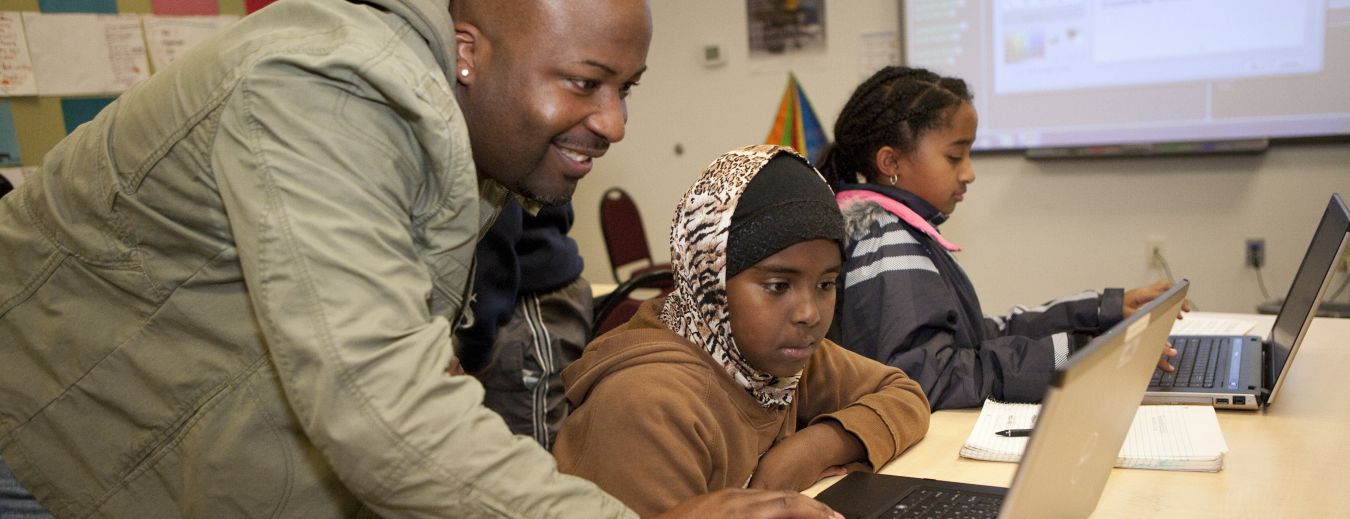Artificial intelligence software increasingly impacts how students learn. But will students of color from low-income families benefit from these education technology tools?
Artificial intelligence increasingly touches our lives—from driverless cars to interaction with our smart phones.
Dennis Bonilla, executive dean of information systems and technology at the University of Phoenix, told NewsOne that the transformational technology reaches into classrooms and impacts how students learn.
For example, in flipped classrooms, teachers assign students homework that utilizes artificial intelligence technology. The software can send the instructor a detailed analysis of students’ comprehension of the assignment. That can enable the teacher to prepare more effectively for interactive learning the next day in the classroom.
With that data in hand, the teacher can begin her lesson with information that large swaths of students struggled to understand. The software can also recommend student pairings for effective group activities in class.
That scenario, however, is not playing out equally. Many school districts with concentrated populations of low-income and students of color are left out of access to the latest education tools.
 Artificial Intelligence and how it’s used in classrooms
Artificial Intelligence and how it’s used in classrooms
Artificial intelligence, or simply AI, is a subset of computer science that involves teaching computers how to learn, reason, and make decisions like humans do. Bonilla said the technology has been around since the 1950s, but advances have led to everyday applications that have made people more aware of the technology.
Are teachers still needed?
While AI is a powerful tool, it cannot replace teachers. “While machines are better at analyzing data, they lack the social quality of a human being, empathy, the human touch,” said Bonilla.
 Some students face barriers to accessing technology
Some students face barriers to accessing technology
These new education tools will likely bypass scores of students. The cost of purchasing and installing the software means that students in poorly funded school districts will not benefit from AI.
“Yes, it’s expensive, but cost is only part of the problem,” Bonilla stated. “The real issue is how can school systems integrate the technology when they’re challenged by incorporating all the other technology that’s available.” […]
Thank you for reading this post, don't forget to subscribe to our AI NAVIGATOR!
read more – copyright by newsone.com


Artificial intelligence software increasingly impacts how students learn. But will students of color from low-income families benefit from these education technology tools?
Artificial intelligence increasingly touches our lives—from driverless cars to interaction with our smart phones.
Dennis Bonilla, executive dean of information systems and technology at the University of Phoenix, told NewsOne that the transformational technology reaches into classrooms and impacts how students learn.
For example, in flipped classrooms, teachers assign students homework that utilizes artificial intelligence technology. The software can send the instructor a detailed analysis of students’ comprehension of the assignment. That can enable the teacher to prepare more effectively for interactive learning the next day in the classroom.
With that data in hand, the teacher can begin her lesson with information that large swaths of students struggled to understand. The software can also recommend student pairings for effective group activities in class.
That scenario, however, is not playing out equally. Many school districts with concentrated populations of low-income and students of color are left out of access to the latest education tools.
Artificial intelligence, or simply AI, is a subset of computer science that involves teaching computers how to learn, reason, and make decisions like humans do. Bonilla said the technology has been around since the 1950s, but advances have led to everyday applications that have made people more aware of the technology.
Are teachers still needed?
While AI is a powerful tool, it cannot replace teachers. “While machines are better at analyzing data, they lack the social quality of a human being, empathy, the human touch,” said Bonilla.
These new education tools will likely bypass scores of students. The cost of purchasing and installing the software means that students in poorly funded school districts will not benefit from AI.
“Yes, it’s expensive, but cost is only part of the problem,” Bonilla stated. “The real issue is how can school systems integrate the technology when they’re challenged by incorporating all the other technology that’s available.” […]
Thank you for reading this post, don't forget to subscribe to our AI NAVIGATOR!
read more – copyright by newsone.com
Share this: